Graphic Design Trends to Watch in 2025 : How to Stay ahead of the Game

Design Trends to Watch in 2025
The design industry is constantly evolving, and staying ahead of the latest design trends is crucial for any business that wants to remain competitive. In 2025 , we can expect to see a number of new design trends that will shape the way we create and consume visual content.
In this blog post, we will take a look at some of the most important design trends to watch in 2025 and how you can stay ahead of the game.
Latest 10 Graphic Design Trends to watch in 2025
As we have transitioned into 2025, the graphic design landscape has evolved with fresh aesthetics, cutting-edge technology, and a stronger emphasis on sustainability.
Here are the top recent 10 graphic design trends set to shape the industry this year:
1. AI-Generated Designs & Automation:
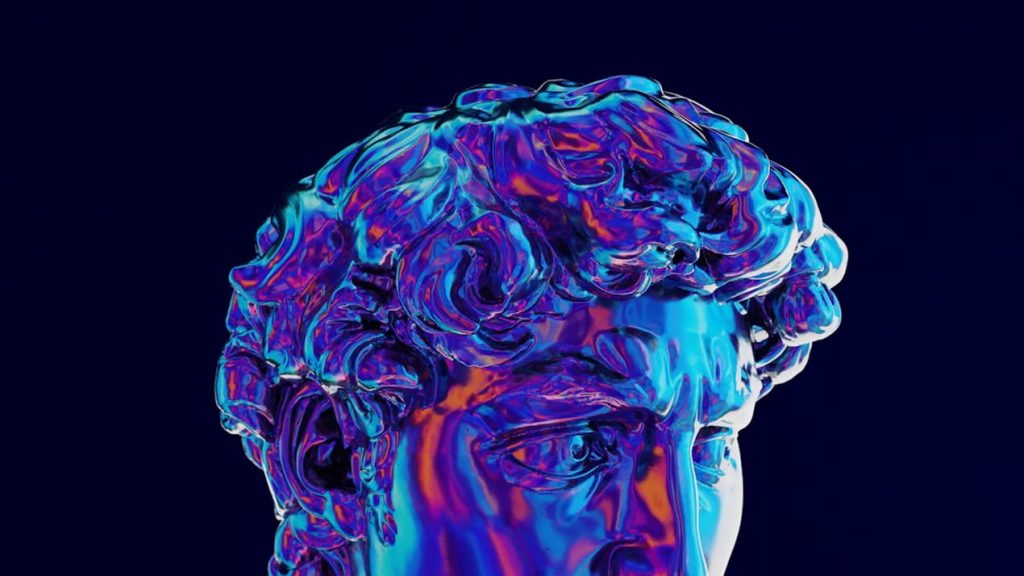
Artificial Intelligence is innovating design workflows, enabling designers to create intricate visuals, automate repetitive tasks, and explore new creative possibilities. Leading design tool companies are integrating AI into their systems for new, innovative designs. Expect more AI-assisted design tools that enhance efficiency without replacing human creativity.
Key elements used in AI-Generated Design & Automation:
- AI-powered tools – Software that leverages machine learning to assist in design creation.
- Generative design – AI algorithms that generate unique patterns, layouts, and visuals.
- Automation – Streamlining repetitive tasks like resizing, retouching, and formatting.
- Intelligent image editing – AI-powered tools that enhance images with smart adjustments.
- Creative augmentation – AI assisting human designers rather than replacing them.
2. 3D & Immersive Design:
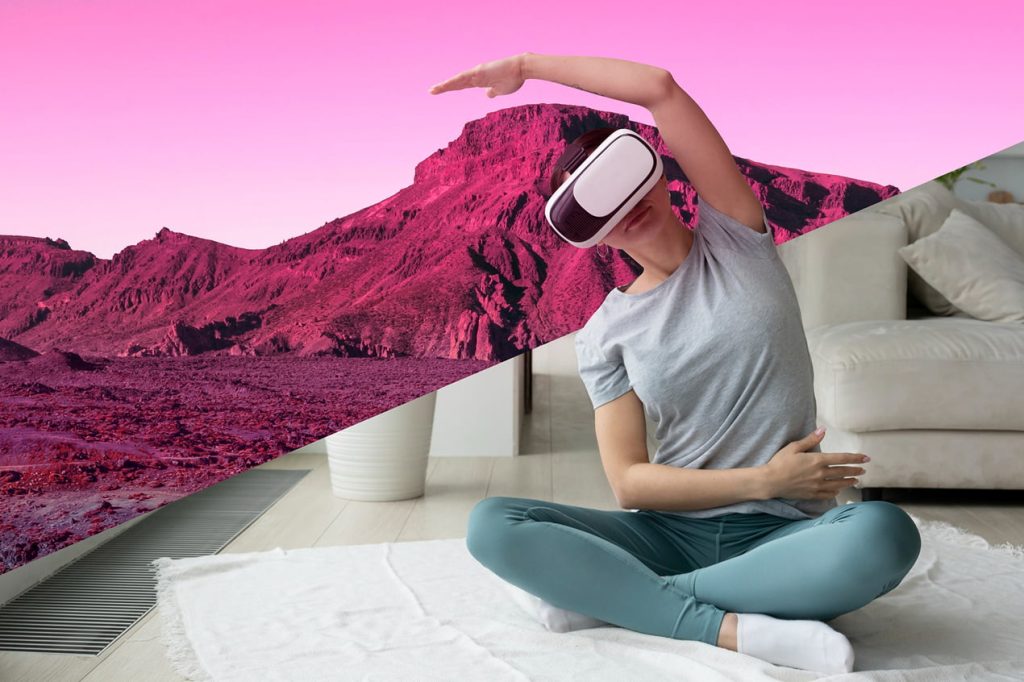
With the rise of AR and VR, 3D elements are becoming more prevalent in branding, packaging, and web design. Hyper-realistic 3D graphics and animations will continue to dominate, offering depth and interactivity.
Key elements used in 3D & Immersive Design:
- Hyper-realistic 3D elements – Highly detailed 3D renderings for depth and realism.
- Immersive experiences – Engaging visuals that integrate with AR/VR for interactive storytelling.
- Motion graphics – Animated 3D elements that bring static designs to life.
- Augmented reality (AR) – Digital elements overlaid onto real-world environments.
- Virtual reality (VR) – Fully immersive digital experiences using 3D environments.
3. Maximalism & Bold Color Palettes:
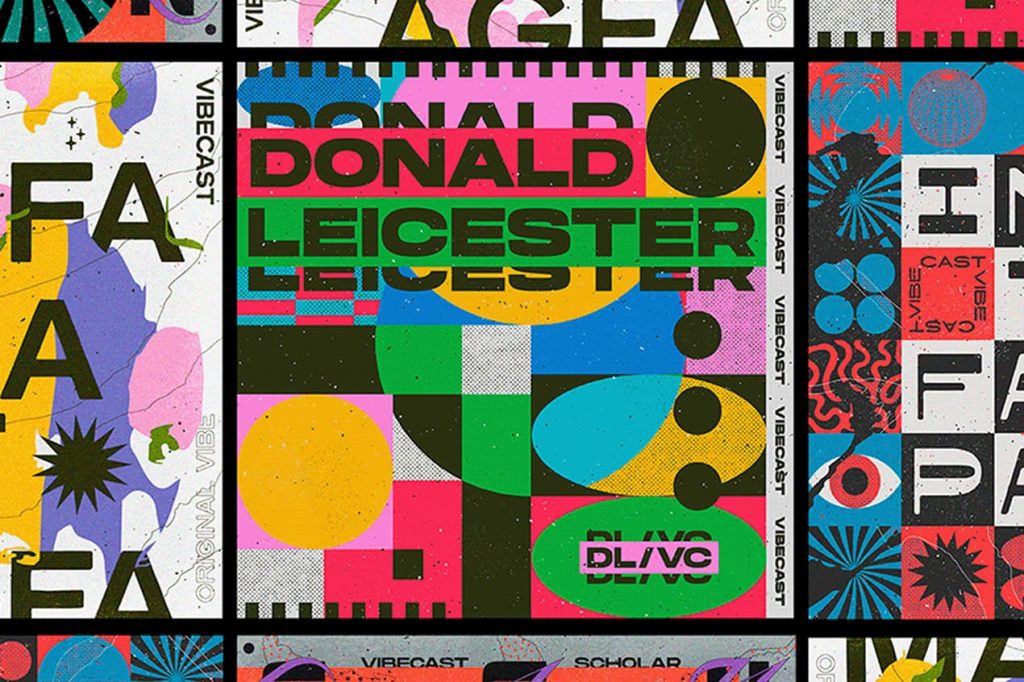
Minimalism is taking a backseat as designers embrace maximalism—vibrant color schemes, bold typography, and layered compositions that create striking visuals. This trend encourages self-expression and breaks conventional design rules.
Key elements used in Maximalism & Bold Color Palettes:
- Bright colors – Vivid and high-contrast hues that demand attention.
- Bold contrasts – Strong juxtaposition of colors and elements to create striking visuals.
- Overlapping elements – Layered typography and images for depth and complexity.
- Mixed textures – Combining different patterns, grains, and surfaces for tactile appeal.
- Expressive typography – Playful, oversized, or experimental text that adds personality.
4. Retro Futurism & Y2K Aesthetics:

Blending nostalgia with futuristic elements, retro futurism and Y2K aesthetics bring neon colors, pixelated designs, and cyberpunk influences to digital and print media. This fusion appeals to both Gen Z and Millennial audiences.
Key elements used in Retro Futurism & Y2K Aesthetics:
- Neon colors – Bright, electric hues that reflect cyberpunk and retro gaming culture.
- Glitch effects – Distorted visuals that simulate digital errors for a futuristic feel.
- Pixelation – Low-resolution elements that evoke early 2000s web aesthetics.
- Metallic textures – Chrome, holographic, and reflective finishes for a high-tech look.
- Sci-fi aesthetics – Futuristic and space-inspired designs with geometric forms.
5. Sustainable & Eco-Conscious Design:

With increasing environmental awareness, brands are prioritizing sustainable design choices. Expect eco-friendly packaging, nature-inspired graphics, and minimal ink designs that promote sustainability.
Key elements used in Sustainable & Eco-Conscious Design:
- Nature-inspired themes – Organic shapes and colors that reflect natural elements.
- Earthy tones – Muted, natural hues that symbolize eco-consciousness.
- Biodegradable packaging – Design solutions that reduce waste and environmental impact.
- Minimalist print designs – Simple layouts that reduce ink and material usage.
- Sustainable typography – Fonts that require less ink and are optimized for eco-friendly printing.
6. Abstract & Organic Shapes:
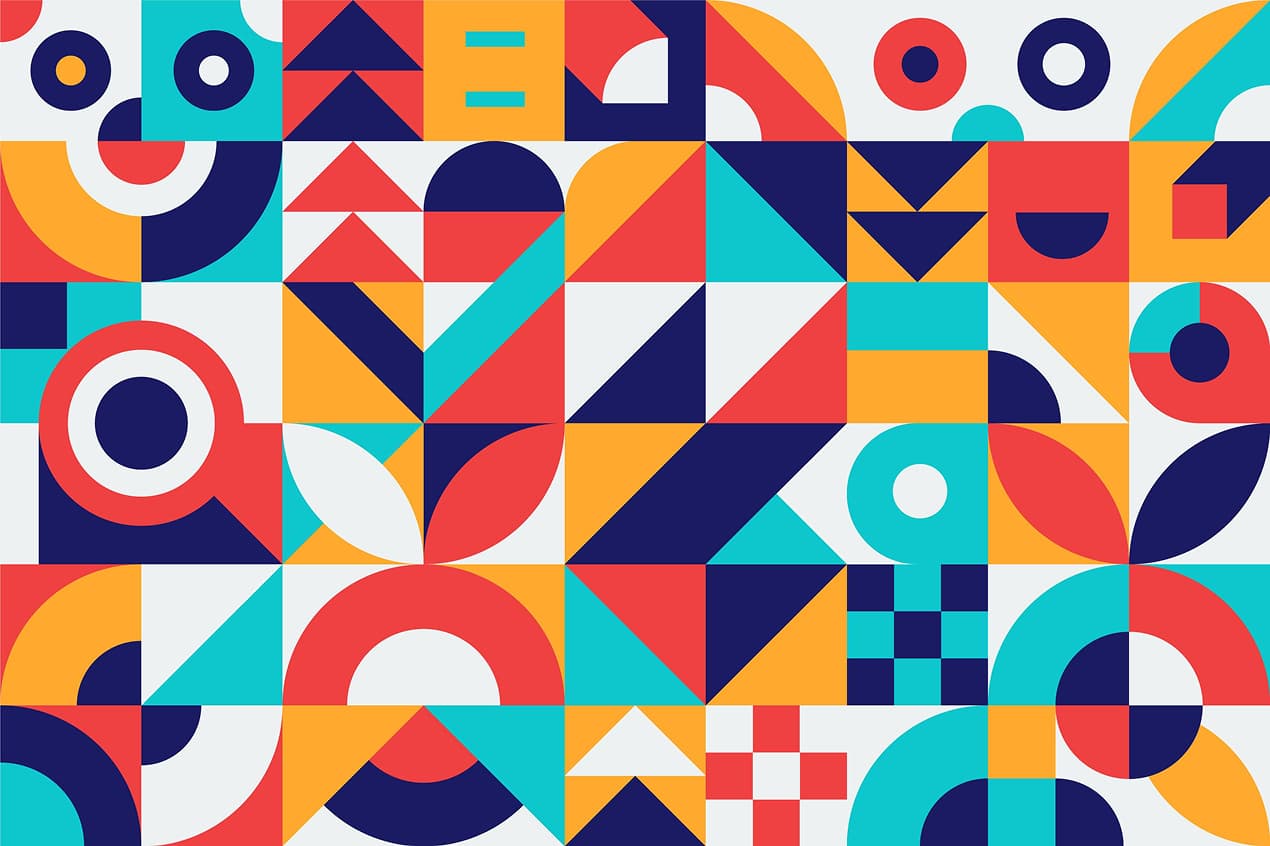
Designers are moving away from rigid structures and embracing free-flowing, organic shapes. Abstract forms create visually engaging compositions that feel dynamic, fresh, and unique.
Key elements used in Abstract & Organic Shapes:
- Curved lines – Soft, rounded edges that create a sense of movement.
- Organic textures – Natural, hand-drawn, or irregular patterns for a human touch.
- Fluid compositions – Unstructured layouts that appear dynamic and spontaneous.
- Asymmetry – Non-traditional layouts that challenge conventional balance.
- Abstract patterns – Artistic, non-literal elements that evoke emotion and intrigue.
7. Experimental Typography:
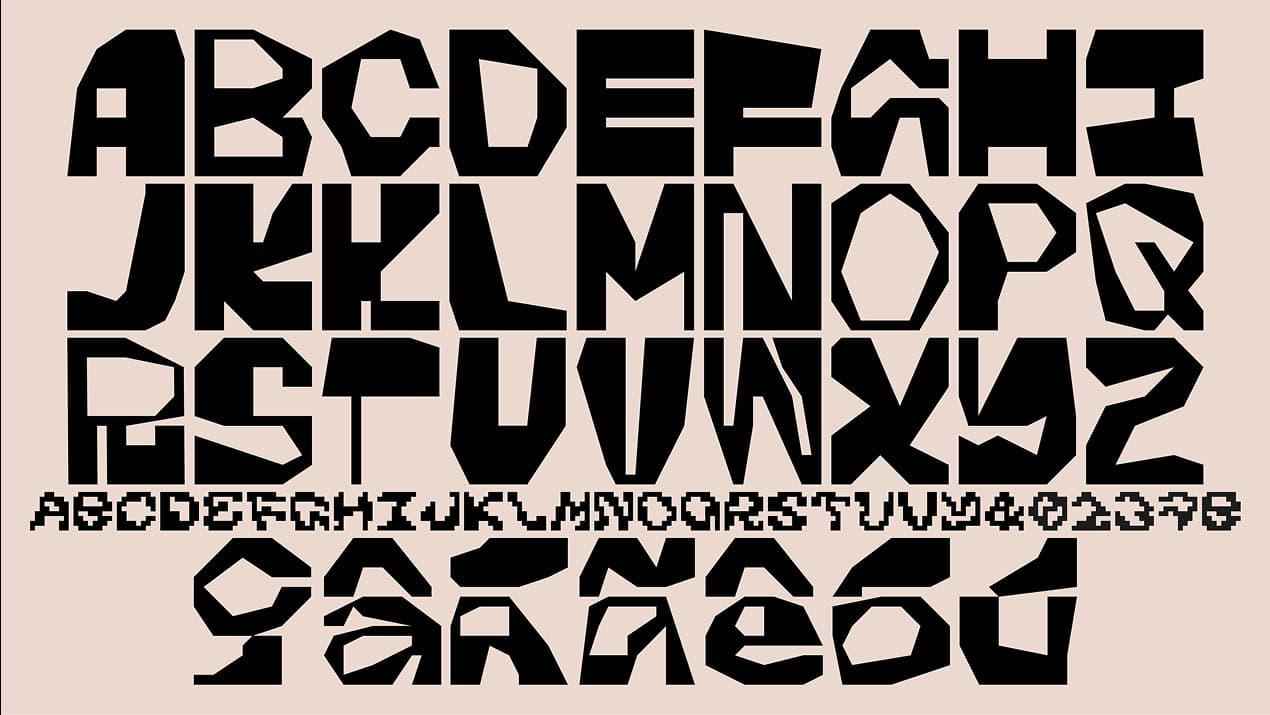
Typography in 2025 will push boundaries with distorted fonts, kinetic type, and unconventional letterforms. Custom typography will play a key role in branding, adding personality and uniqueness to visual identities.
Key elements used in Experimental Typography:
- Custom fonts – Unique, brand-specific typefaces that enhance visual identity.
- Distorted text – Warped, stretched, or skewed letters for artistic impact.
- Animated typography – Moving text that interacts with other design elements.
- Hand-drawn lettering – Personalized, artisanal fonts with a human touch.
- Experimental layouts – Non-traditional text placement that enhances visual storytelling.
8. Gradients & Neon Glows:
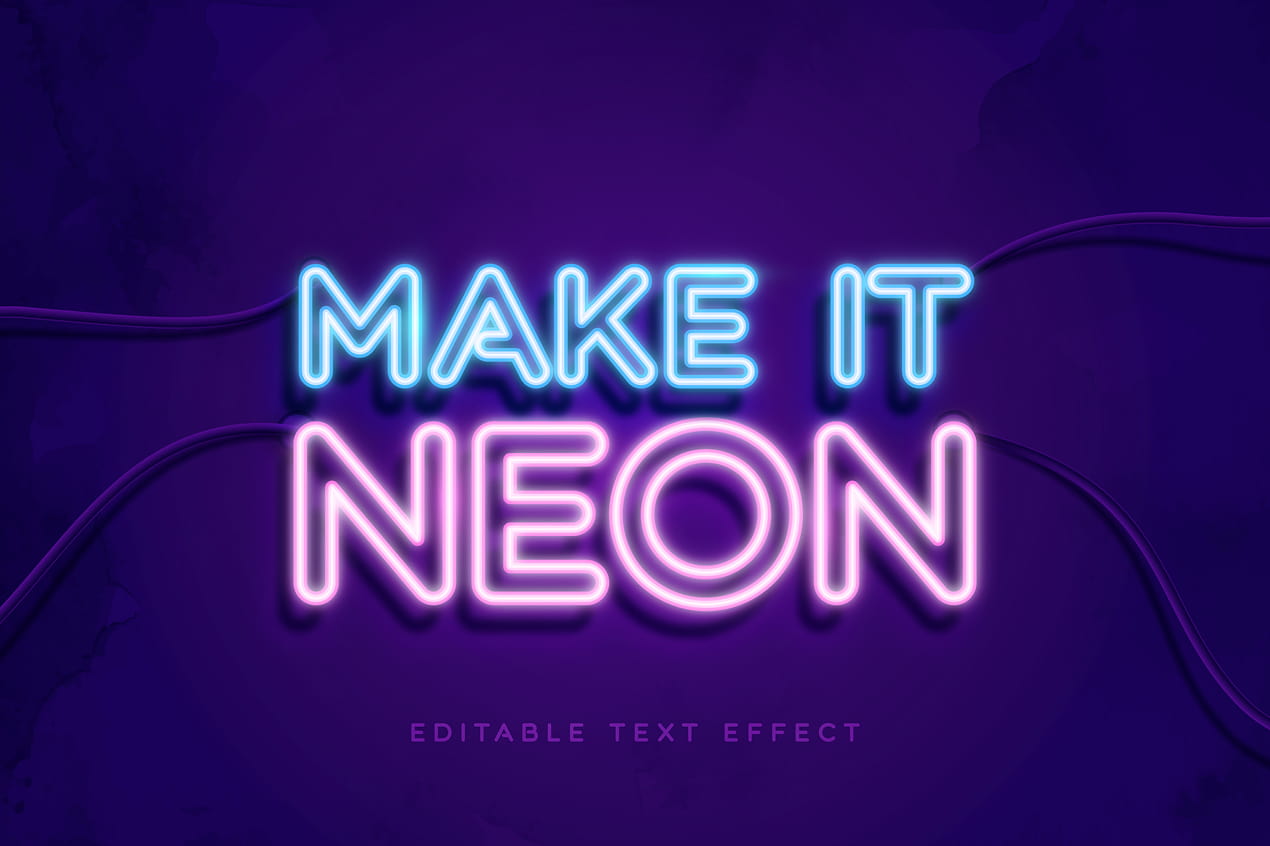
Gradients are evolving with bolder transitions and futuristic neon glows. This trend is widely used in UI design, social media graphics, and branding to create a vibrant and modern aesthetic.
Key elements used in Gradients & Neon Glows:
- Vibrant color transitions – Smooth blending of multiple hues for depth.
- Soft glows – Subtle, radiant lighting effects that add a dreamy feel.
- Duotones – Two-tone color schemes that create modern, high-contrast visuals.
- Holographic effects – Light-reflecting patterns that simulate futuristic materials.
- Luminous highlights – Bright spots of light that enhance visual appeal.
9. AI-Enhanced Illustrations:

Illustration styles are shifting with AI-assisted tools that blend hand-drawn elements with digital enhancements. Expect surreal, hyper-detailed, and dreamlike illustrations in marketing campaigns and product designs.
Key elements used in AI-Enhanced Illustrations:
- Hybrid art styles – A mix of digital and hand-drawn elements.
- Hyper-detailed textures – Intricate details created through AI precision.
- Surreal illustrations – Dreamlike compositions that feel imaginative and otherworldly.
- AI-assisted creativity – Technology helping artists explore new styles and techniques.
- Generative patterns – AI-created abstract designs that adapt to different contexts
10. Glass Morphism & Holographic Effects:
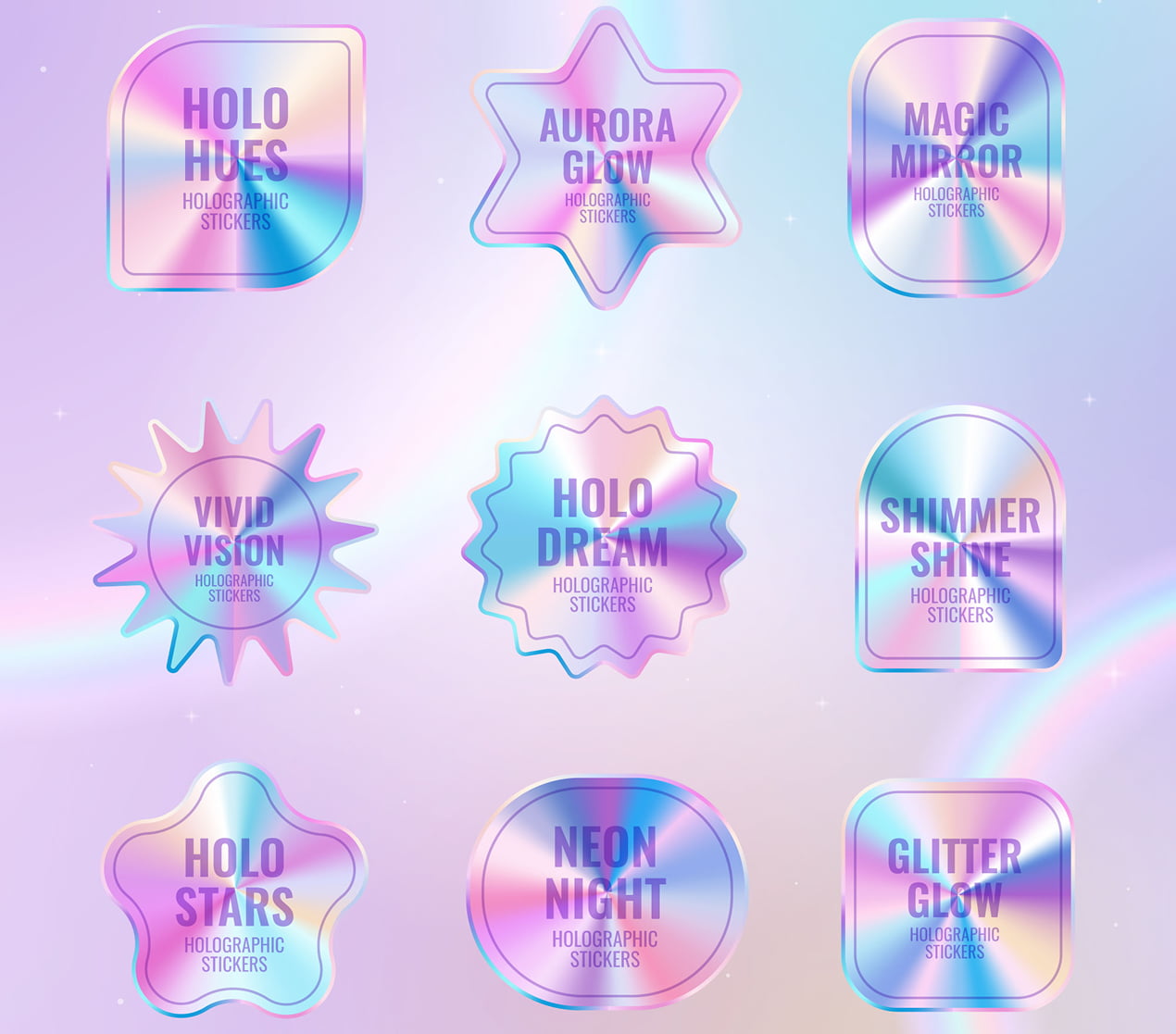
The glass-like, translucent aesthetic of glass morphism continues to grow, especially in UI/UX design. Combined with holographic textures, this trend creates futuristic, sleek, and interactive visuals.
Key elements used in Glassmorphism & Holographic Effects:
- Frosted glass effects – Semi-transparent elements with soft blurs for depth.
- Transparency – Overlapping layers with varying opacity for a sleek look.
- Blurred backgrounds – Soft-focus backdrops that enhance readability.
- Holographic textures – Reflective surfaces with rainbow-like color shifts.
- Light reflections – Simulated reflections that create a realistic glassy feel.
These trends highlight the exciting directions graphic design is taking in 2025.
Therefore, staying ahead of these innovations will help designers craft compelling visuals that resonate with modern audiences.
It’s important to keep in mind that it’s not about blindly following the trends, but about understanding them and deciding whether they align with your brand message and values.
As a creative agency, it’s important to stay updated and informed about the latest design trends and techniques, so that you can provide your clients with the best solutions that fit their needs and help them to stand out in their respective industries.
Looking for a Branding & Designing of your Business
connect with Doodlo Design via mail contact@doodlodesigns.com
For Customize & Corporate Gifting Visit Our Partner Website Doodlo comics